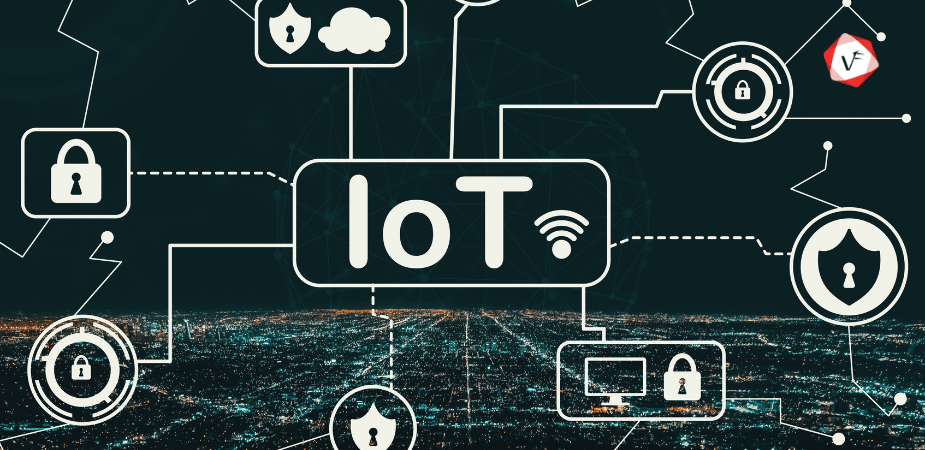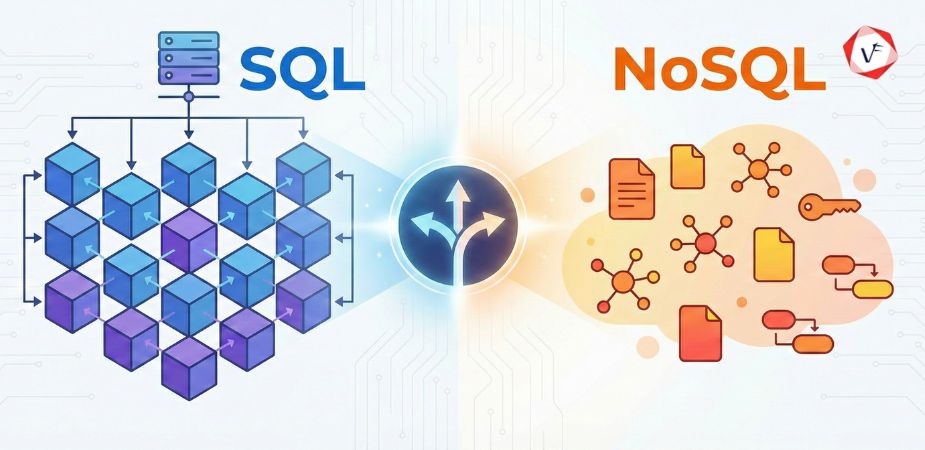- April 07, 2025 2:56 pm
- by Ajanth
- April 07, 2025 2:56 pm
- by Ajanth

The Internet of Things (IoT) is a transformative force in the modern day, revolutionizing industries and everyday life. From smart homes and healthcare devices to connected vehicles and industrial automation, IoT devices enhance convenience, efficiency, and innovation. However, the rapid proliferation of IoT devices introduces significant security challenges that cannot be ignored. This article explores the critical IoT security challenges, highlights their potential impact, and discusses practical solutions to safeguard IoT ecosystems. By addressing these concerns, organizations, and individuals can fully harness IoT’s potential without compromising security or privacy.
IoT devices are now indispensable across multiple sectors, with applications ranging from personal wearables to industrial monitoring systems. According to industry estimates, there will be over 25 billion IoT devices in operation by 2030. While these devices bring unparalleled convenience, they also expand the attack surface for malicious actors.
Securing IoT is no longer an option but a necessity, as vulnerabilities in connected systems can lead to data breaches, operational disruptions, and even threats to life and safety in sensitive environments like healthcare and transportation. Ensuring IoT security involves addressing challenges that are unique to interconnected ecosystems.
Proliferation of Devices Without Adequate Security: IoT devices are manufactured at an unprecedented pace to meet market demand, often prioritizing functionality and affordability over security. As a result:
Weak Authentication Protocols: Default credentials and weak passwords are a pervasive issue in IoT. Many devices come with factory-set usernames and passwords, which users often fail to change. These easily guessable credentials make devices prime targets for brute-force attacks.
Lack of Industry Standards: The IoT ecosystem spans numerous industries, each with its own manufacturers and vendors. The absence of universal security standards leads to inconsistencies, making it harder to secure devices comprehensively.
Vulnerabilities in Firmware and Software: IoT devices often run outdated or unpatched firmware, leaving them vulnerable to known exploits. Manufacturers may not provide timely updates, and users may lack the technical expertise to implement them, compounding the risk.
Insecure Communication Protocols: IoT devices frequently transmit sensitive data over networks. If these communications are not encrypted, attackers can intercept and manipulate the data. For example, unsecured devices in smart homes could expose user locations or personal habits.
Complex IoT Ecosystems: An IoT ecosystem typically comprises a wide variety of devices, sensors, networks, and cloud services. This complexity increases the risk of misconfigurations or overlooked vulnerabilities, which attackers can exploit.
Botnet Exploitation: Compromised IoT devices can be recruited into botnets—large networks of infected devices used to launch Distributed Denial-of-Service (DDoS) attacks. The 2016 Mirai botnet attack demonstrated the massive scale of such threats.
Privacy Concerns: IoT devices collect vast amounts of user data, from health metrics to location information. A breach can lead to sensitive data falling into the wrong hands, resulting in identity theft, blackmail, or reputational damage.
Physical Security Risks: Unlike traditional IT devices, IoT devices are often deployed in accessible locations, making them vulnerable to physical tampering. Attackers can extract sensitive information or even modify devices to compromise the network.
IoT security breaches can have devastating consequences, including:
<br>Securing IoT devices and ecosystems requires a multi-layered approach, involving technical, organizational, and regulatory measures. Below are some of the most effective IoT security solutions.
Robust Authentication Mechanisms: IoT devices must implement secure authentication methods to prevent unauthorized access. Recommended practices include:
End-to-end Encryption: Data security is paramount in IoT ecosystems. Implementing encryption protocols like AES-256 ensures that sensitive information is secure during transit and at rest. Secure Sockets Layer (SSL) and Transport Layer Security (TLS) are essential for encrypted communication between devices.
Regular Firmware and Software Updates: Manufacturers must commit to providing regular updates to address vulnerabilities. Automatic patch management systems can simplify the update process, ensuring that all devices are running the latest secure software.
Device Hardening: Device hardening reduces the attack surface by:
Network Segmentation: Segmenting IoT devices into separate networks can limit the impact of a breach. For instance: IoT devices in smart homes should be isolated from personal devices like laptops or smartphones. Corporate IoT systems should operate on dedicated networks, separated from critical infrastructure.
Adherence to IoT Security Standards: Frameworks like the NIST Cybersecurity Framework and standards such as ISO/IEC 27001 provide best practices for IoT security. Adopting these guidelines ensures a structured and consistent approach to securing devices.
Intrusion Detection & Threat Monitoring: IoT ecosystems require continuous monitoring for anomalous behavior. Implementing Intrusion Detection Systems (IDS) and Security Information and Event Management (SIEM) tools can help detect threats in real time, enabling swift responses.
Blockchain for IoT Security: Blockchain’s decentralized ledger can enhance IoT security by:
Zero-Trust Architecture: The zero-trust security model assumes no user or device is inherently trustworthy. IoT systems designed around this principle enforce strict authentication and access controls, reducing the likelihood of breaches.
Security Awareness Training: Educating users about IoT security risks is crucial. Awareness campaigns should cover:
Healthcare IoT: IoT devices like wearable health monitors and smart infusion pumps are transforming patient care. However, a breach in these systems could compromise patient safety. To mitigate risks, healthcare providers are implementing: Strong access controls to limit device use to authorized personnel. Data encryption to protect patient information during transmission.
Industrial IoT (IIoT): In industrial settings, IoT devices monitor equipment, control processes, and manage supply chains. Security breaches can disrupt operations or cause physical damage. Effective measures include:
Smart Homes & Cities: IoT in smart homes and cities improves energy efficiency and public services but also introduces risks. For example, attackers could exploit vulnerabilities in connected lighting or traffic systems. Ensuring robust device authentication and adopting secure communication protocols are essential in these scenarios.
AI & ML: AI-powered tools can analyze vast amounts of IoT data to detect anomalies and predict potential threats. Machine learning algorithms enable adaptive security measures, such as adjusting access permissions based on user behavior.
Quantum-Resistant Encryption: As quantum computing becomes a reality, traditional encryption methods may become obsolete. Developing quantum-resistant algorithms will be critical to ensuring the long-term security of IoT systems.
Edge Computing: Processing data closer to the source reduces latency and limits the exposure of sensitive information. Edge computing is increasingly being integrated into IoT systems to improve both performance and security.
IoT Governance & Regulations: Governments and industry bodies are introducing regulations to enforce IoT security standards. For instance, the California IoT Security Law mandates reasonable security features in all IoT devices sold in the state.
As IoT adoption grows exponentially, regulatory frameworks and policies play a crucial role in ensuring consistent security standards across devices and networks. Governments and industry bodies worldwide are recognizing the risks associated with unsecured IoT systems and introducing measures to enhance security and mitigate threats. Several regions have implemented IoT-specific regulations to address security challenges.
Challenges in Policy Enforcement: Despite the progress, several challenges hinder the enforcement of IoT security policies:
Global Variation: IoT regulations vary significantly across regions, leading to inconsistent security measures.
Lack of Awareness: Many manufacturers, especially smaller ones, are unaware of regulatory requirements or find compliance costly.
Rapid Innovation: IoT technology evolves faster than legislation, creating gaps that attackers can exploit.
The Future of IoT Security Policies: Looking ahead, we can expect:
Unified Global Standards: Initiatives by organizations like the International Telecommunication Union (ITU) aim to develop universal IoT security guidelines.
Mandatory Compliance: Governments may require IoT certifications as a prerequisite for market access.
Enhanced Accountability: Manufacturers will face stricter liability for security breaches caused by negligence.
Policy-driven IoT security frameworks provide a robust foundation for long-term protection. Businesses can stay ahead by aligning with regulations, ensuring their IoT ecosystems meet or exceed legal and industry standards.
The security challenges of IoT demand immediate attention as the world becomes increasingly connected. Addressing these challenges involves robust authentication, data encryption, regular updates, and adherence to industry standards. Emerging technologies like AI, blockchain, and quantum-resistant encryption hold the promise of making IoT ecosystems more secure. Organizations must adopt a proactive approach to IoT security, integrating these solutions into their development and operational processes. For businesses seeking reliable and secure IoT solutions, Vofox's IoT development and security services stand out as a trusted choice. With expertise in building robust IoT ecosystems, we ensure your connected systems are resilient against evolving threats, enabling you to embrace the future of IoT with confidence. Connect with our experts to get started.
Guaranteed Response within One Business Day!

What is Digital Twin Technology?

What are WebAssembly (WASM) Applications?
Code Review Best Practices: Complete Guide for 2026

Database Selection Guide: SQL vs NoSQL
AI Agents in Enterprise Software: How Autonomous AI is Transforming Business Operations